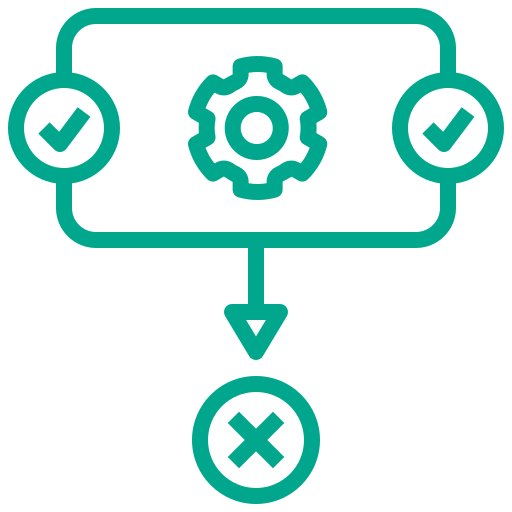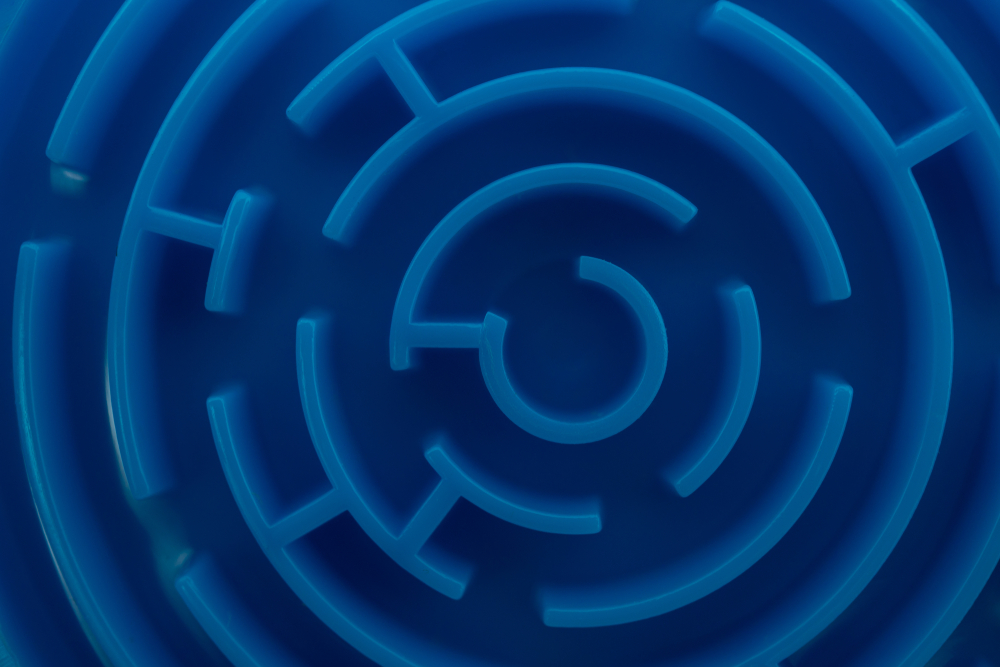Insulate your facility against cyber threats with defence-grade security for healthcare
Improve the quality of your services with national-grade cybersecurity solutions for healthcare
Ironclad VPN cryptography solutions
Improve the quality of your services with national-grade cybersecurity solutions for healthcare
2021 reported that 66% of ransomware attacks affected healthcare facilities.
As contemporary healthcare facilities rely on digital devices, cybersecurity in healthcare and the protection of information has become vital.
Many of these facilities utilise various specialised information systems—from EHR systems and clinical decision support systems to radiology information systems. In addition, thousands of devices like the Internet of Things and control systems, from smart elevators to smart HVAC systems, that ensure climate control within research and care facilities also require security against cyberattacks.
A robust cyber defence architecture is a must to prevent healthcare facilities from facing operational downtime and data breaches that would endanger multiple parties relying on the facilities.
2021 reported that 66% of ransomware attacks affected healthcare facilities.
As contemporary healthcare facilities rely on digital devices, cybersecurity in healthcare and the protection of information has become vital.
Many of these facilities utilise various specialised information systems—from EHR systems and clinical decision support systems to radiology information systems. In addition, thousands of devices like the Internet of Things and control systems, from smart elevators to smart HVAC systems, that ensure climate control within research and care facilities also require security against cyberattacks.
A robust cyber defence architecture is a must to prevent healthcare facilities from facing operational downtime and data breaches that would endanger multiple parties relying on the facilities.
What does cyber defence in healthcare look like?
Advanced security controls in healthcare cyber defence include:

Firewall

Encryption

Mobile device management

Business continuity and disaster recovery plans

Digital forensics

Multi-factor authentication

Patch management programs

Network segmentation

Penetration testing
What does cyber defence in healthcare look like?
Advanced security controls in healthcare cyber defence include:

Firewall

Encryption

Mobile device management

Business continuity and disaster recovery plans

Digital forensics

Multi-factor authentication

Patch management programs

Network segmentation

Penetration testing
What to expect from defence-grade security for healthcare
What are the upgrades your facility can expect with a bespoke national-grade cybersecurity solution for healthcare?
Identification of your digital ecosystem
The first step in building a cyber defence architecture for a healthcare facility is to identify every asset in your digital ecosystem. Identifying the internet-connected assets in your organisation provides a greater understanding of your existing security posture. In healthcare, this includes all devices including the Internet of Things (IoT), Internet of Healthcare Things (IoHT), as well as Operational Technology (OT) like lighting or climate control.
Implementation of your endpoint protection
Device security is essential to prevent sensitive documents from being shared outside a healthcare facility without authorisation. Investing in defence-grade security for healthcare means insulating the digital assets you rely on— desktops, laptops, and mobile devices—with encryption to prevent data loss and leakage, enforcing unified data protection policies across all the servers, networks, and endpoints.
Patching vulnerabilities in your system
Cyberattack vectors often take advantage of known vulnerabilities in existing systems, making it easier to threaten your digital ecosystem with ransomware, steal confidential information, and misuse that information. Defence-grade security solutions can enable the healthcare sector to notice vulnerabilities in a system swiftly and patch them effectively, to ensure full insulation of your security architecture.
Complying with healthcare standards
Maintain compliance by identifying the gaps in your security compliance. Failing to secure confidential data—about patients, pharmaceuticals, and diseases, for example—can have serious consequences on your operations and every other stakeholder of your facility. By ensuring compliance standards—such as the HIPAA (Health Insurance Portability and Accountability Act) and the GDPR (General Data Protection Regulation) for countries of the European Union—you can ensure your reliability as a healthcare facility.
What to expect from defence-grade security for healthcare
What are the upgrades your facility can expect with a bespoke national-grade cybersecurity solution for healthcare?
Identification of your digital ecosystem
The first step in building a cyber defence architecture for a healthcare facility is to identify every asset in your digital ecosystem. Identifying the internet-connected assets in your organisation provides a greater understanding of your existing security posture. In healthcare, this includes all devices including the Internet of Things (IoT), Internet of Healthcare Things (IoHT), as well as Operational Technology (OT) like lighting or climate control.
Implementation of your endpoint protection
Device security is essential to prevent sensitive documents from being shared outside a healthcare facility without authorisation. Investing in defence-grade security for healthcare means insulating the digital assets you rely on— desktops, laptops, and mobile devices—with encryption to prevent data loss and leakage, enforcing unified data protection policies across all the servers, networks, and endpoints.
Patching vulnerabilities in your system
Cyberattack vectors often take advantage of known vulnerabilities in existing systems, making it easier to threaten your digital ecosystem with ransomware, steal confidential information, and misuse that information. Defence-grade security solutions can enable the healthcare sector to notice vulnerabilities in a system swiftly and patch them effectively, to ensure full insulation of your security architecture.
Complying with healthcare standards
Maintain compliance by identifying the gaps in your security compliance. Failing to secure confidential data—about patients, pharmaceuticals, and diseases, for example—can have serious consequences on your operations and every other stakeholder of your facility. By ensuring compliance standards—such as the HIPAA (Health Insurance Portability and Accountability Act) and the GDPR (General Data Protection Regulation) for countries of the European Union—you can ensure your reliability as a healthcare facility.
What to expect from defence-grade security for healthcare
What are the upgrades your facility can expect with a bespoke national-grade cybersecurity solution for healthcare?

Identification of your digital ecosystem
The first step in building a cyber defence architecture for a healthcare facility is to identify every asset in your digital ecosystem. Identifying the internet-connected assets in your organisation provides a greater understanding of your existing security posture. In healthcare, this includes all devices including the Internet of Things (IoT), Internet of Healthcare Things (IoHT), as well as Operational Technology (OT) like lighting or climate control.

Implementation of your endpoint protection
Device security is essential to prevent sensitive documents from being shared outside a healthcare facility without authorisation. Investing in defence-grade security for healthcare means insulating the digital assets you rely on— desktops, laptops, and mobile devices—with encryption to prevent data loss and leakage, enforcing unified data protection policies across all the servers, networks, and endpoints.

Patching vulnerabilities in your system
Cyberattack vectors often take advantage of known vulnerabilities in existing systems, making it easier to threaten your digital ecosystem with ransomware, steal confidential information, and misuse that information. Defence-grade security solutions can enable the healthcare sector to notice vulnerabilities in a system swiftly and patch them effectively, to ensure full insulation of your security architecture.

Complying with healthcare standards
Maintain compliance by identifying the gaps in your security compliance. Failing to secure confidential data—about patients, pharmaceuticals, and diseases, for example—can have serious consequences on your operations and every other stakeholder of your facility. By ensuring compliance standards—such as the HIPAA (Health Insurance Portability and Accountability Act) and the GDPR (General Data Protection Regulation) for countries of the European Union—you can ensure your reliability as a healthcare facility.
Build a resilient cybersecurity architecture with VOROR
VOROR promises our clients the best cyber defence solutions to act proactively against any threats penetrating their digital assets. Our bespoke protection can enable your healthcare facility to detect, avoid, and counter potential threats, while effortlessly integrating into your existing digital ecosystem.
To partner with a defence-grade cybersecurity provider, get in touch with our specialists today.
FAQs
Securing important patient data, vital medical research information, and the cyber resilience of all the digital assets of your healthcare facility is crucial in the digital age.
As patient and disease information becomes more valuable on the darknet, secure transaction of medical data becomes a necessity. As such, remote healthcare services cyber defence is a must to prevent the risks associated with such threats.
- Complying with data protection regulations
- Adhering to standards of data security
- Preventing the risk of data breaches
- Maintaining confidentiality of data
- Protecting multiple devices connected to your services
VOROR helps organisations establish a resilient future with bespoke cyber defence solutions such as Zero Trust Assured Protocol solutions, Zero Trust email architecture solutions, and government-grade cryptography services.
To understand more about how your organisation can benefit from VOROR, get in touch today!
Ensure the sustainability of your healthcare facility with proactive cyber defence solutions
